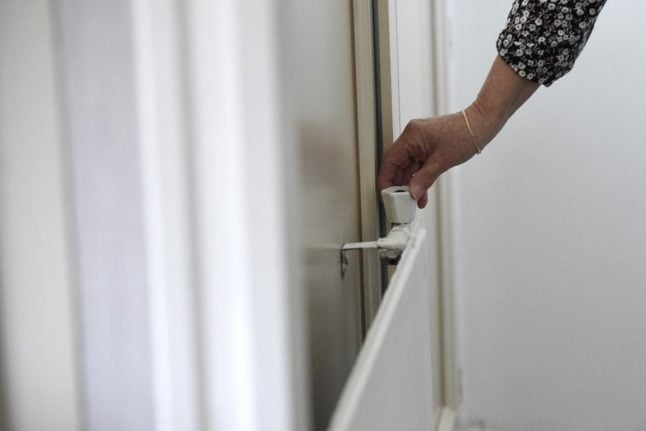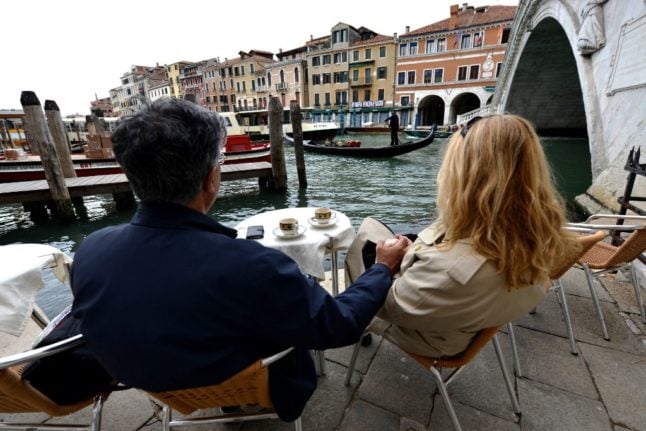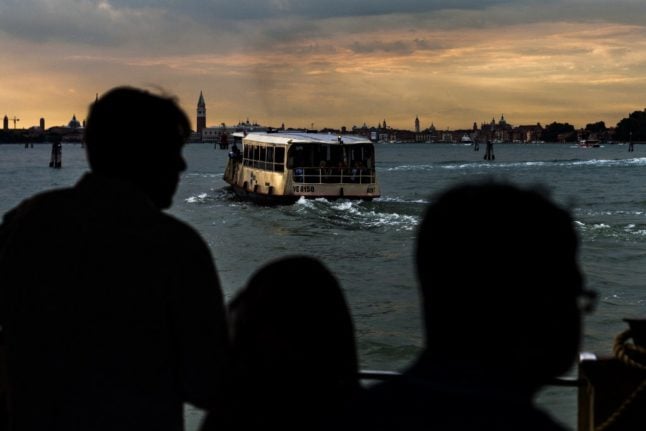Very few cities in the world can match Venice’s spellbinding beauty, which is why many have at least once in their lives considered relocating to the northern city.
But life between the Veneto capital’s grandiose waterside buildings and narrow ‘calli’ (the local name for ‘streets’) comes with a hefty price tag, with one recent study naming Venice among the most expensive Italian cities for overall living costs.
READ ALSO: Moving to Italy: How much does it really cost to live in Milan?
After all, eye-watering prices are partly responsible for the city’s recent depopulation and Venetians’ mass exodus to cheaper mainland areas.
But if you hope to move there, exactly how much money will you need to live in Venice and what are the biggest expenses for residents?
Housing
If Venice is often described as a ‘città per nababbi’ (‘a city for tycoons’), it’s mostly because of its high housing costs, which apply to both renters and buyers.
The average asking price for a property within Venice’s municipality is 3,323 euros per square metre, which, albeit far from the exorbitant prices seen in Portofino (10,891 euros per square metre) or Capri (8,202), is still some 1,434 euros above national average and double the regional average.
READ ALSO: ‘Fighting for survival’: Has Venice become a city no one can live in?

That said, it’s worth noting that prices can climb as high as 5,365 euros per square metre in the San Marco district, the most central area of the city.
Things aren’t much better for renters: a one-bedroom flat in the city centre will set you back 662 euros a month on average (bills are excluded).
READ ALSO: Reader question: How will Venice’s tourist tax affect second-home owners?
While rent can be as high as 17 euros per square metre on the main island, prices are generally lower in the mainland (Mestre and surroundings) and on the smaller islands (Murano, Lido, Pellestrina, etc.)
That said, it would be nearly impossible to rent a flat for less than 13 euros per square metre.
See which areas of the city are cheaper when it comes to buying or renting a property, you can refer to the following online map.
Bills
Utility bills are the second-biggest expense for Venice residents.
Much like any other Italian region, Veneto has been hit by sharp increases in gas and electricity bills due to the European fuel crisis. According to some estimates, such increases will amount to 10 billion euros by the end of 2022.

Though bills are naturally dependent upon a household’s individual expenditure, ‘bollette’ (utility bills) are estimated to cost more than average in Venice.
Monthly bills – including gas, electricity and water plus waste collection fees – for an 85-square-metre flat in Venice are estimated to add up to an average of 269 euros.
That’s a whopping 91 euros over Italy’s national average, which currently stands at 178 euros a month.
Groceries
The price of groceries in Italy has increased dramatically over the past few months, triggered by record levels of inflation.
According to Italian consumer group Codacons, Venice is the eleventh-most expensive Italian city when it comes to grocery shopping as filling a supermarket cart with basic goods is estimated to set residents back 99 euros on average – that’s a 24-euro difference compared to the cheapest city, Naples.
A list of the most cost-efficient supermarkets in Venice can be downloaded here (click on ‘Scarica lo speciale supermercati’).
Eating out
There is certainly no shortage of bars and restaurants in Venice, though as a resident you might prefer to frequent a ‘bacaro’: a quintessentially Venetian tavern serving local wine and food.
As in most major cities, the size of your bill will largely depend not just on the type of eatery you go for but also on its location, with prices being usually much lower in the less touristy areas of the city.
That said, a three-course meal for two people in a mid-range restaurant will set you back 70 euros on average – around 10 euros above the national average – while a regular meal in an inexpensive restaurant comes at around 15 euros a head.
RANKED: The best (and worst) places to live in Italy in 2022

Going out, leisure, entertainment
While lacking in nightlife, Venice offers residents plenty of things to do during the day, especially on weekends.
And, though the city might not have as broad an entertainment portfolio as Milan, it still manages to satisfy a good variety of tastes and personalities.
READ ALSO: Nine ways to get into trouble while visiting Venice
On this front, prices are slightly higher than in other major cities across the country but are still accessible for the most part.
For instance, a regular cinema ticket costs around 12 euros, whereas renting a tennis court for one hour comes at an average price of 21 euros.
Transport
Local transport in Venice is fairly reliable – water buses (‘vaporetti’) run frequently and they’re usually on time.
That said, services are sometimes disrupted by fog or high tides (‘acqua alta’) during the cold months, whereas vaporetti running on the main lines are often crowded during peak tourist season (late May to early September).

Prices are however fairly affordable. A monthly all-inclusive pass (‘rete unica’) with ACTV, the main public transport operator in the city, costs 37 euros, whereas an annual ticket goes for 370 euros.
Generous discounts are available to students and people over 75.
Private taxi services are available too. While being by far the quickest way to get around, water taxis are very expensive, with the cost of a ride ranging from a minimum of 40 euros for a shorter journey up to as much as 250 euros.




 Please whitelist us to continue reading.
Please whitelist us to continue reading.
Member comments